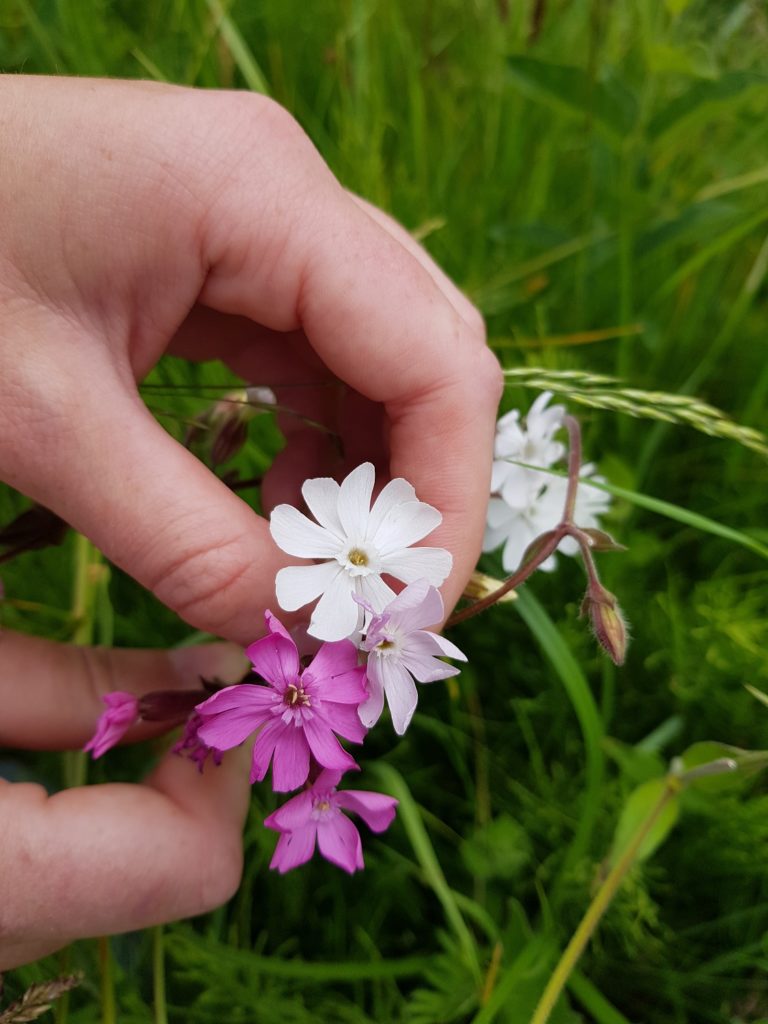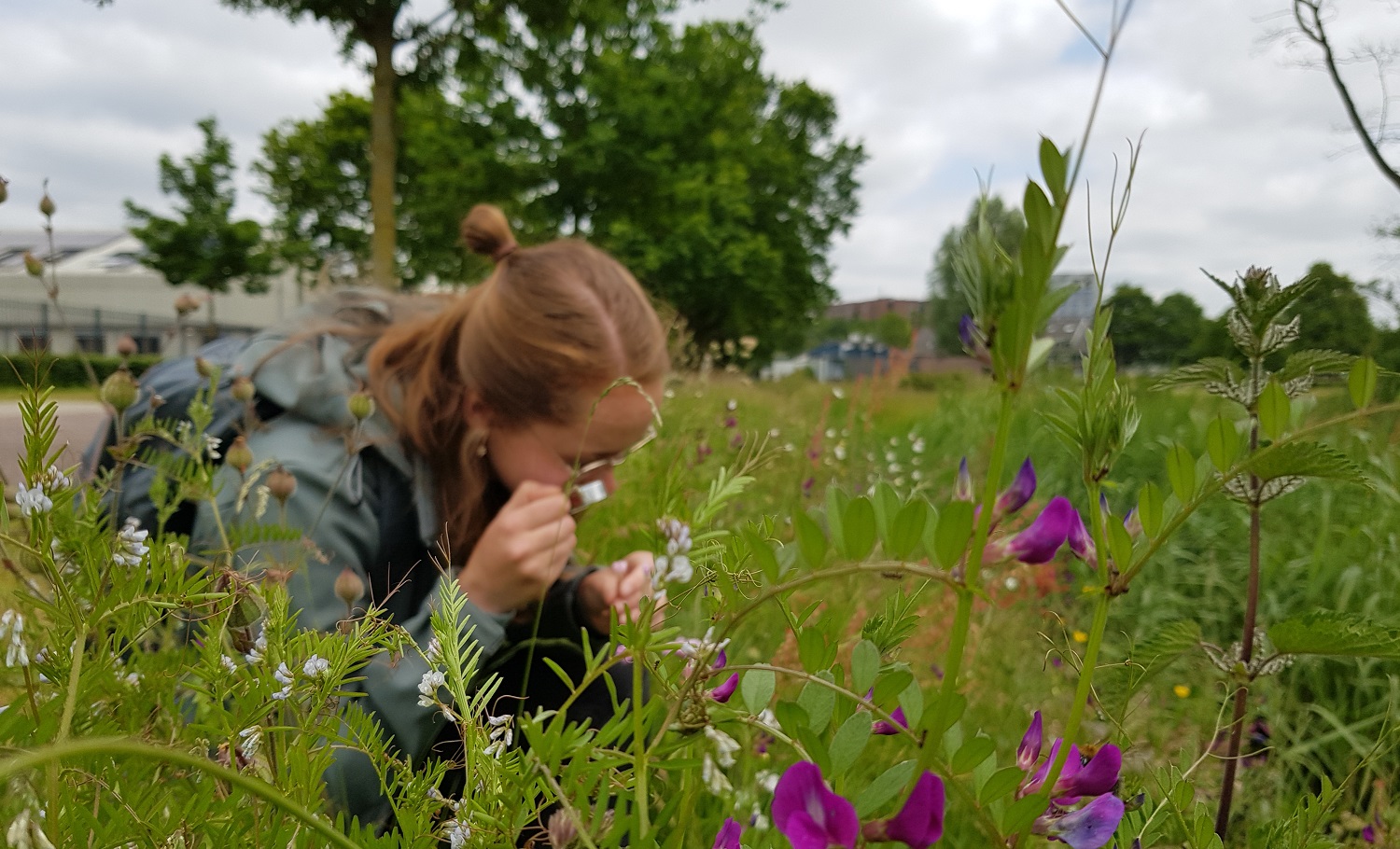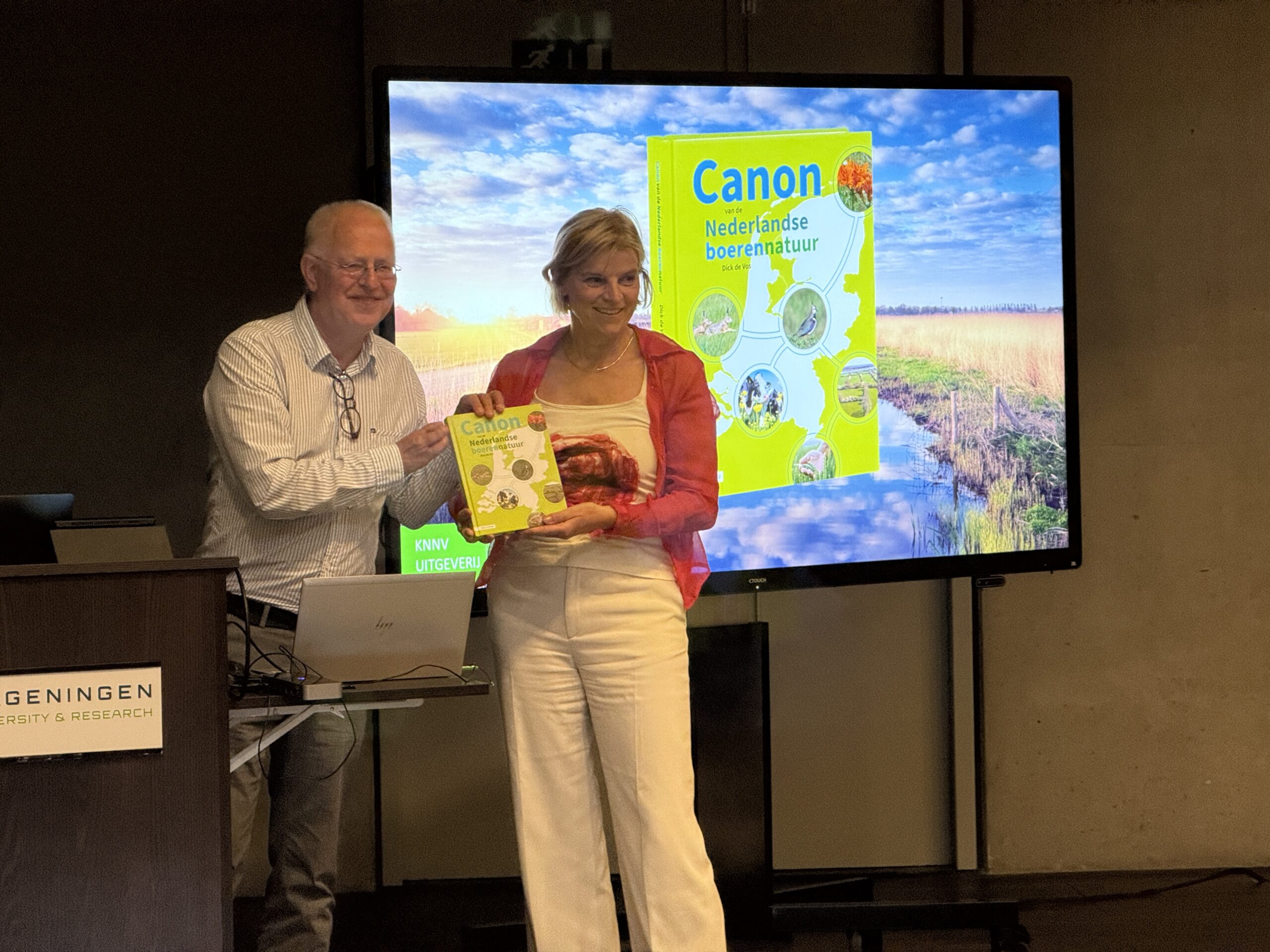Ilse Koks is just back from cycling down the Grebbeberg. In between her field practical there and a lecture after lunch, she has time for a chat. Even if it means missing out on spotting a few species. With almost 180 species identified, the first-year Forest and Nature Management student is one of the 2023 Bioblitz’s top observers.
The Bioblitz is actually just an additional motivation for something she was already involved in, Koks says. ‘Before this year, I took a gap year and spent a lot of time outdoors. The more time you spend outdoors, the more species you learn to identify. I used the app ObsIdentify frequently. Since I started here at the university, my knowledge of plants has rapidly increased.’
Her method is simple. ‘I just walk around, and enter everything I encounter on waarneming.nl. I usually use my breaks. And I get together with a few other for a short Blitz, especially if I have spent the rest of the day indoors. We have now identified over 850 different species, so the more common species will have been covered. I believe we should now start to focus on other species than just plants and birds. Dandelions and daisies don’t cut it anymore.’

The hybrid yields a rather unique, perfectly baby-pink flower.
Ilse Koks, a first-year student of Forest and Nature Management
Waarneming.nl is the national platform used by Bioblitz to record observations. There, you can see precisely who sighted what, when and where. Everything is neatly ordered in diagrams and lists. A spotter leaves a trail of breadcrumbs. ‘My mother sometimes says: If I wonder what you did today, I simply check waarneming.nl’, Koks says, laughing.
Lychnis
There are not many rare species on the campus. Nevertheless, Koks found a rare hybrid of the diurnal and nocturnal lychnis. For those who don’t know: the diurnal variety is bright pink, and the nocturnal variety is white. ‘The hybrid yields a rather unique, perfectly baby-pink flower. Quite unusual, a sight rarely seen.’ For those who want to see for themselves: the flowers are located along the ditch near the research barn behind the Zodiac building.
The Bioblitz started two weeks ago and will continue until the end of this month. The competition will conclude with a biodiversity festival on Saturday, 1 July.

 Photo Roelof Kleis
Photo Roelof Kleis 

